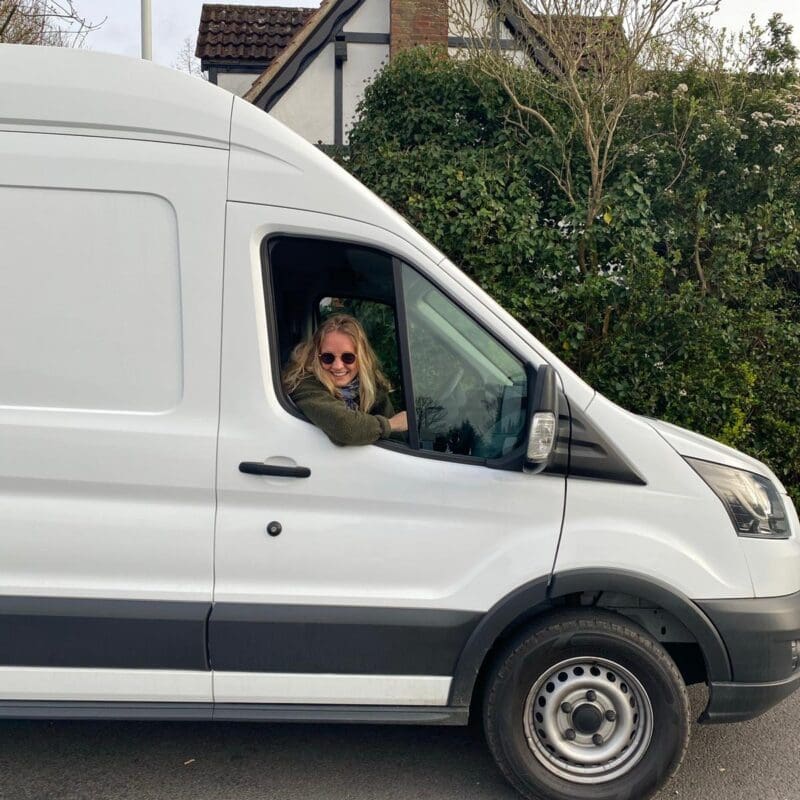
Decarbonising aviation: can the airline industry ever be sustainable?
Can hydrogen live up to the hype, or is aviation the latest industry guilty of greenwashing? From biofuels to electric planes, ROADBOOK examines the sustainability initiatives taking flight in a bid to transform the airline industry
In 1923, American aviator Glenn Curtiss wrote in the Star Tribune that ‘by 2023, it is possible aircraft will be propelled not by engines, as today, but by radio, without limit, practically, as to speed and distance’. It remains to be seen what his theory, that ‘the utilisation of radio as a means of propulsion for airships’, was based on, but it’s clear that Curtiss, who built, pioneered and produced engines, had high hopes for the advancement of aviation technology.
One hundred years later, airlines are under increasing pressure to invest in alternative, renewable energy sources to fuel their planes. Aircraft rely on burning fossil fuels, which releases CO2 emissions and nitrogen oxides into the air, and whilst significant progress has been made in fuel and CO2 efficiency (a flight today generates around half the CO2 it would have in 1990), aviation is still thought to be responsible for 2.5 per cent of global CO2 emissions, not to mention difficult-to-quantify effects of water vapour, soot and sulphate aerosols.

carbon offsetting is not the solution
According to Watershed, an enterprise climate platform, a return flight from London to Bangkok and back emits about 3.7 tonnes of CO2, which is equivalent to 9,234 miles by car and approximately nine months of electricity usage by the average home.
As effects of the climate crisis have dramatically increased and consumer pressure has mounted, airlines have adopted quick-fix solutions such as carbon offsetting and voluntary charitable donations. Environmental experts have long been sceptical of offsetting – where companies purchase carbon credits or compensate for their emissions through initiatives such as tree planting – as a long-term solution. “The term ‘offsetting’ suggests emissions disappear,” says co-founder and CEO of Responsible Travel Justin Francis. “That’s simply not true, and it emboldens us to fly more – which is emissions growth we can’t afford.”
As early as 2007, investigative journalist Nick Davies wrote in The Guardian that the idea of offsetting “flows not from environmentalists and climate scientists trying to design a way to reverse global warming but from politicians and business executives trying to meet the demands for action while preserving the commercial status quo”.
For years, carbon credits were unregulated, and it can feed into the psychological phenomenon of moral licensing, in which doing something ethical is perceived as permission to do something problematic later. Plus, it places the responsibility on the consumer, not the airline. From 2022, the EU has stopped allowing offsets to be counted towards emissions reduction targets.
We’ve been too slow to recognise the threat of climate change
Can hydrogen-powered planes become a reality?
Replacing petrol with radio is a fantasy, but following the success of hybrid and fully electric cars, more travellers are wondering when the aviation industry will catch up. Whilst electric cars still require fossil fuels for the construction of their batteries and the energy used to charge them, they dramatically reduce the levels of harmful exhaust emissions deposited in the air whilst being driven. In 2022, Volkswagen revealed the first e-campervan, the ‘ID. Buzz’; earlier this year, solar-powered boat Fàng Sōng announced it could travel 50 kilometres per day. It’s inevitable that travellers trying to reduce their carbon footprint are beginning to demand the same from their flight suppliers.
“The first partially hydrogen-powered plane flew in 1957. The first electric car ran in 1832. In both cases we’ve been too slow to recognise the threat of climate change,” Francis continues. “Aviation has been very slow to step up, and the fact that it’s not been part of most governments’ carbon budgets has not helped.”

“Battery-powered electric is non-feasible for long-haul aviation,” advises Dr Aldo Steinfeld, Professor of Renewable Energy Carriers at ETH Zurich. His team has been pioneering technology for the production of ‘drop-in fuels’ made from water and CO2 captured directly from the air and converted into kerosene (the fuel most commonly used in aviation) using solar-driven processes. “Effectively, it takes inspiration from photosynthesis, which converts CO2 captured directly from the air into hydrocarbon fuels. These are carbon neutral because they release only as much CO2 during their combustion as was previously extracted from the air for their production, and can thus have huge potential when it comes to sustainable aviation,” he explains. “Plus, these drop-in fuels are compatible with the worldwide existing infrastructures for fuel distribution, storage and end-use,’ he adds.
‘There is no one single solution to decarbonising aviation,’ comments EasyJet’s director of sustainability, Jane Ashton. “EasyJet hopes to achieve net zero carbon emissions by 2050, and we have outlined how different technologies will play a key role in time.” Last year, EasyJet partnered with Rolls Royce to invest in research and development of hydrogen-powered planes and carbon capture technology. “Ultimately, with investors, regulators and customers increasingly rewarding more environmentally efficient travel, it makes business sense to prioritise opportunities to reduce environmental impact,” Ashton told SimplyFlying in its latest report. In other words, environmental awareness has moved the goalposts for EasyJet and its competitors. Several airlines such as Air Canada and Lufthansa Group have signed ‘Letters of Intent’ to explore Direct Air Carbon Capture and Storage (DACCS), a process that sees CO2 emissions removed directly from the air and then stored underground as carbon through companies such as Climeworks and 1PointFive.

In December 2022, Virgin Atlantic announced it would be operating the world’s first net-zero transatlantic flight from London Heathrow to New York JFK in late 2023. The flight will be powered by Sustainable Aviation Fuel, or SAF, a biofuel derived from things like used cooking oils, plant oils and agricultural residues. Finnish company Neste supplies SAF to more than 50 airlines (such as Singapore Airlines, Malaysia Airlines and Air New Zealand), and a recent expansion of their Singapore refinery has positioned it as the largest in the world.
“We need to move now, not wait for possible perfect solutions in the future,” says Jonathan Wood, vice president of renewable aviation at Neste. “Yes, decarbonisation comes at a cost – but the question should not be ‘How much more does SAF cost?’ but rather ‘What will the cost be if we don’t use innovations like SAF?’”’
Not everyone believes SAF has the longevity necessary, however, and the EU’s new mandate that demands airlines carry a minimum amount of SAF only sets the target at 2 per cent by 2025. “SAF bio-kerosene is not a feasible solution at the global scale,” adds Steinfeld.

The reality of bio-fuels
Paul Eremenko, founder of Universal Hydrogen Company, agrees. In a recent social campaign to educate followers about green hydrogen, he tweeted that “biofuels and other ways of producing SAF from biomass are extremely inefficient. They are seldom anywhere near ‘net zero’ and require immense amounts of biomass.” Of course, Eremenko has skin in the game, but he has reason to believe in the hype around hydrogen: Universal Hydrogen recently received their first FAA certificate for its first flight and is working with airlines such as Icelandair, Air New Zealand and American Airlines.
Naturally, greenwashing is a concern for travellers. In March 2023, a Lufthansa advert claiming the airline was ‘Connecting the world. Protecting its future’ was banned in the UK for misleading consumers. The Advertising Standards Agency found there are ‘currently no environmental initiatives or commercially viable technologies in the aviation industry which would substantiate the absolute green claim’, issuing an implicit warning to the rest of the industry. Those that fail to deliver on promises like this do further damage to the cause.
Even during research for this article, it became apparent that few airlines are prepared to discuss their sustainability policies beyond a pre-approved press release, if at all.
Following the success of hybrid and fully electric cars, travellers are questioning when the aviation industry will catch up
Cost is a major concern, too – often, a product’s sustainability credentials come at the expense of the consumer. The global average carbon footprint per person is around four tonnes per year, but that number fails to reflect the fact that the world’s poorest countries contribute the least to global emissions, yet often suffer the most. One study by Science Direct suggests that just one per cent of the world’s population, known as ‘super emitters’, are responsible for over 50 per cent of aviation emissions. For the majority of travellers, the lack of accessible and affordable options are barriers to making more sustainable choices, placing responsibility with those with more disposable income.
‘Overall, our hope should be for renewably powered aviation by 2050, but many technical challenges remain,” says Justin. “In the short term, hope lies with SAF, but after that, it’s hard to tell whether electric, hydrogen, or hydrogen-electric will make the biggest contribution.” But, he warns, there’s a hidden carbon-heavy cost for all of this innovation: “All these fuels require new planes.”
Whilst Universal Hydrogen’s research suggests that hydrogen will be at cost parity with jet fuel by 2025, it’s inevitable that pioneering research and investing in new ideas will push costs up for travellers to start with, leaving it up to governments, businesses and the one per cent to make choices that drive demand up and costs down. But relying on super-emitters to super-charge sustainable aviation might be as optimistic as the idea of taking to the skies using radio.









